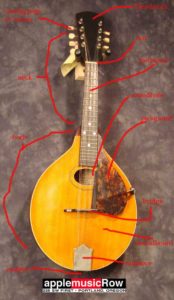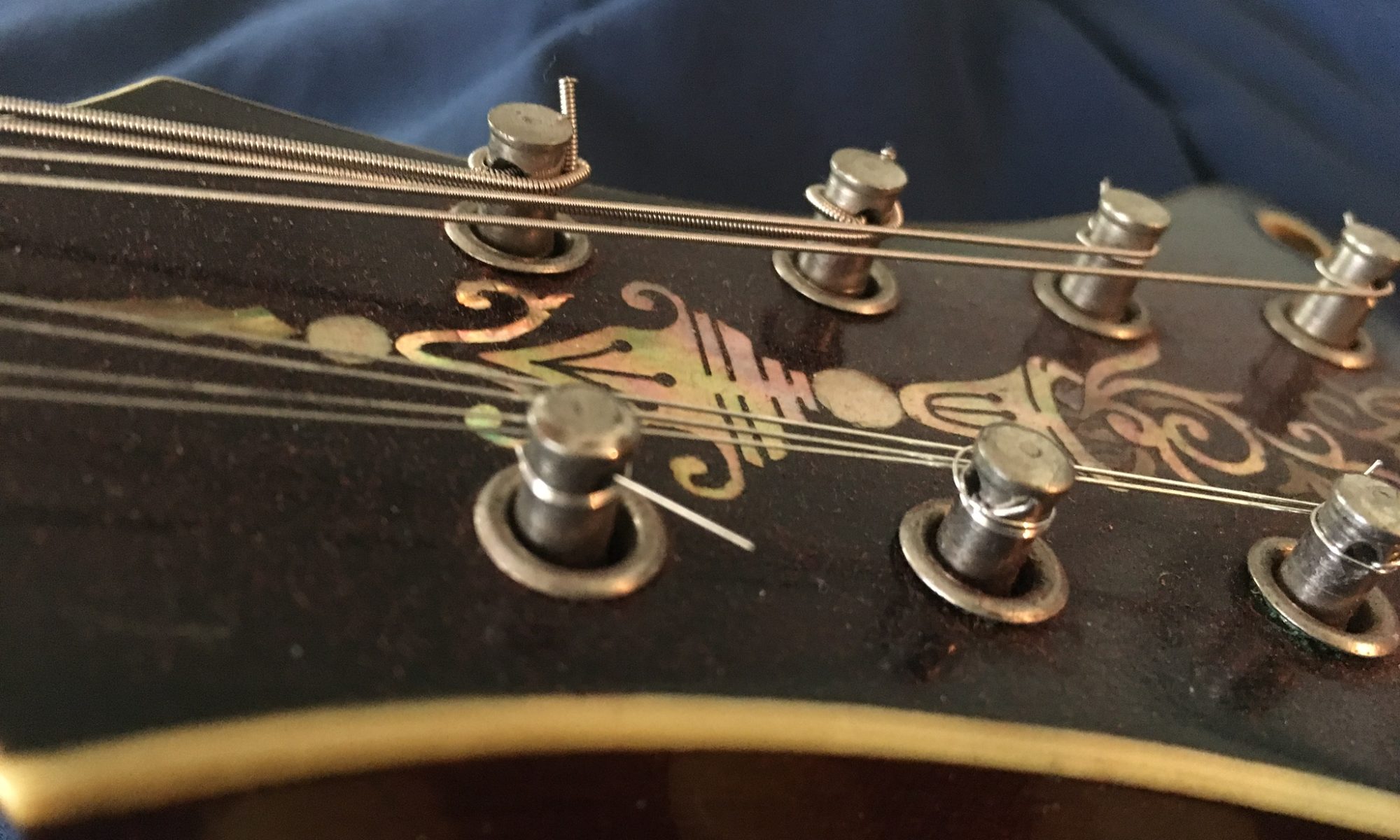A few years ago a friend of mine asked for some mandolin lessons. Only problems were, she didn’t have a mandolin and she lived in a different city. Still, I have some peculiar notions about what it means to learn an instrument and I thought there was a lot of information to go through that would be helpful before she even picked up an instrument. So here is part one of two of the first set of email “lessons” that I put together. It turns out to be a pretty good history/overview of the instrument if I do say so myself. Enjoy!
Learning The Mandolin: History – The Bluegrass Era
“Lesson” 1 – Listen
As I understand it, in Indian music culture, you spend years learning to sing the music – even the drums – before touching an instrument. Years.
So lesson one is to learn this melody. It doesn’t have to be pretty, and it won’t be the first thing you learn to play. (When you are ready for it, you will find that it will come quickly). For now, it must go into your soul, and later when you are ready you will pick it out, and it will show you how things work on mandolins (and violins and guitars and pianos and whatnots).
So listen, learn, and sing it to yourself, while biking, while working, while studying, and while you are waiting for the coffee to brew. Sing it aloud, and sing it only in your mind.
“Lesson” 2 – How It All Fits Together

There are more pieces and names, but these are the important ones. Hidden parts – back and sides of the body – are called back, and sides, and the back of the neck (which includes the headstock) is the neck, on top of which the fretboard sits although we usually call the whole neck+fretboard the neck. Oh, I forgot to label the frets – they are the pieces of wire embedded in the fretboard. [I don’t remember where I got the image, I’ll try to make a better one sometime]
“Lesson” 3 – Agility Is Everything
To kill, cheetahs use agility and acceleration not top speed
“Lesson” 4 – Roland White
There’s probably a half a dozen mandolinists you should know, Bill Monroe, David Grisman, Chris Thile, maybe Sam Bush and Norman Blake. But one of my very favorites is Roland White.
Roland came up in the sixties with a bluegrass outfit called the Kentucky Colonels that included his brother Clarence White (Clarence played guitar with The Byrds, usually makes the top 20 of all time lists, and was killed tragically in front of Roland – crushed by a truck – at a very young age).
Roland spent some time on the road with Bill Monroe, and then played in a band called the Flying Burrito Brothers (which had, over time, Gram Parsons and a bunch of other famous folks rotating through) and then Country Gazette with Alan Munde.
[Check out my post 3 Pillars of Americana: Family, Fusion, and the Hard Stuff for more info about the Byrds and Burritos.]
Anyways, here is a (relatively) recent video of Roland playing a tune you will learn pretty early on called “Soldiers Joy.”
Here is an example of the Kentucky Colonels
Here is Country Gazette doing one of my favorite songs ever
And here is extra credit with his brother on a tune from the Byrds Sweetheart Of The Rodeo.
“Lesson” 5 – Bill Monroe
You can’t talk too much about the mandolin without discussing Bill Monroe. Bill came out of somewhere in Appalachia with a mandolin, a high tenor voice, an idea for how a band should perform, and a penchant for surrounding himself with the finest of players. The f-5 mandolin that he plays sounds a little barky, and he tends to overplay a little (as in I think he strums too hard), but hell he invented an entire genre all by himself, and that genre circles around the mandolin. And the harmonies. And such a long list of smoking hot pickers. Anyways here are some little gems.
The original lineup with Lester Flatt, Earl Scruggs, and Chubby Wise:
A later lineup with Peter Rowan on guitar. Watch that right-hand dance around:
I wish the audio were better on this:
and bonus for the high tenor
“Lesson” 6 – David Grisman pt 1
David Grisman is going to take a while. He is the Dawg Father, after all.
First, off Grisman not only loved the rich bluegrass tradition, but also the music of Django Reinhardt and Stephane Grappelli.
After being in a bunch of bands, and even playing on the Grateful Dead’s “Friend of the Devil,” he started a band with Jerry Garcia on banjo and Peter Rowan singing and playing guitar (Peter had a long stint with Bill Monroe in the 60s and 70s) and John Hartford on fiddle (who was soon replaced by Vasser Clements) called Old and in the Way.
Listen to how playful the rhythm of the mandolin is:
(Vasser is a monster player on tha fiddle)
That same year Grisman had an outfit called Muleskinner with Clarence White, Peter Rowan, Bill Keith on banjo – who invented the melodic style of banjo playing – and Richard Greene, a fellow who also put in a stint with Bill Monroe. In some ways, this teases some of his later music.
bonus “Friend of the Devil”:
That’s all for today – that’s a lot. We’ll pick up with some more Grisman, and then keep on going tomorrow.
If you like mandolin, you will like the two Fence Sitters records, More Blue Than Green and Mission to Mars, as well as the Zirque Bois d’Arc record Songs About Russia.

